They can handle heights, like windy weather and fight for «windmills», not against them. We are talking about the 70 or so wind turbine technicians that keep the turbines – and the production of renewable electricity – going across Italy, Germany and Switzerland. «Our people – unfortunately only men at this moment in time – are the perfect combination of electricians and mechanics», says Francesco Piersanti. He heads the Operations and Maintenance department of BKW’s Wind and Solar division. After all, knowledge of electromechanical and instrumental components, energy flows and control logic is crucial whether in the role of a trouble-shooter (i.e. when turbines fail and the problem needs to be solved) or during planned maintenance work.
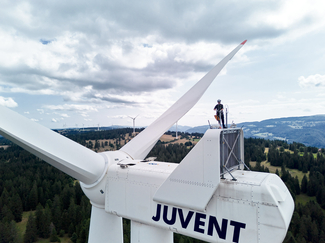
«We place great value on the transfer of knowledge»
As Francesco Piersanti says, the behind-the-scenes organisation plays a major role: «Our people in and on the turbines can only work efficiently if supply chain processes are set up well – and are digitalised wherever possible. This means the entirety of the procurement and logistics processes, as this ensures that the required materials are available at all times.» However, agreements with turbine manufacturers are also essential. This is important as it gives BKW access to the material stocks and key components of the individual turbine types. The different turbine types from the different manufacturers that BKW operates present a challenge here; each type of turbine has its own peculiarities. «This is why it is crucial that we have people in our team with specialist knowledge of the individual turbines. At the same time, though, we place great value on the transfer of knowledge, as this ensures that our employees’ knowledge of the various turbine technologies is constantly expanding.»
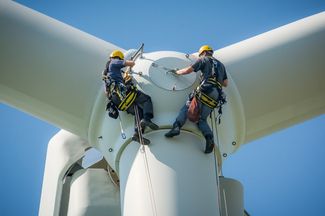
Looking through the eyes of the technician and supporting them – one day
The technicians are supported and guided by the operational support teams. These teams plan the work outside and manage the turbine materials and tools. They also monitor the operation of the turbines from the office. «The team is made up of members from various professions, such as supervisors, but also engineers and technicians who support our people in the parks from the central offices», says Francesco Piersanti. Digitalisation comes into play here too, with a computerised maintenance management system used to oversee all maintenance work carried out efficiently and to record the resources used for this work.
«In the future, the technical support team in the office may also be with our technicians when they are inside the turbine and faced with a problem. One idea that we have is to equip our technicians with special helmets with interactive glasses. These will allow the person supporting them to see through the eyes of the technician, so to see, and to support them in that way – like in a science-fiction film!» says Piersanti.
![[Translate to Englisch (CH):] Francesco Piersanti](/fileadmin/_processed_/2/9/csm_Piersanti.png_f778b328eb.png)
«Using data from the entire life cycle of the turbine, algorithms can create a profile of each individual turbine, allowing technical works to be planned with great precision and predictability.»
Data, not assumptions
Digitalisation in wind farms is already very advanced in many areas and, in recent years, has significantly changed the maintenance and operations work carried out by Francesco Piersanti’s team. «Until a few years ago, we operated the systems on a run-to-failure basis. As a result, we only discovered problems when they were large enough to identify and had already caused significant costs and production losses.» Thanks to advanced status monitoring systems and predictive software algorithms, today the software detects deviations in key operating parameters, such as an increased generator bearing temperature, and enables predictive diagnosis. This allows employees to identify the cause of a technical problem in good time and to respond proactively. The situation is similar for maintenance work. For example, in the past it was common to change the gear oil at predetermined intervals, whereas sensors can now detect when an oil change is required by analysing the chemical and physical properties of the oil. Several location-specific factors can influence the frequency of oil changes, including the climatic conditions and the operating hours of the turbine. «So, our work is based on data – not assumptions. This enables us to optimise both operation of the systems and the operating costs. And, most importantly of all, the energy yield itself.»
In the future, digitalisation will be so advanced that algorithms will be able to predict when system maintenance is required. «Using data from the entire life cycle of the turbine, algorithms can create a profile of each individual turbine, allowing them technical works to be planned with great precision and predictability», says Piersanti. The role of energy trading is also essential here, as BKW uses wind and pricing forecasts in their maintenance work planning to ensure that the systems are always available for production when market conditions are right.
Valuable staff support from La Goule
In Italy, Francesco Piersanti’s team operates and maintains 22 wind farms with 260 turbines and a total output of 483 MW. Around half of the turbines are owned by third-party companies. The wind farms are mainly located in southern Italy, where the wind blows regularly and the areas are sparsely populated. «Our teams are very well established there, which means that we deliver high-quality operations and maintenance work», says Piersanti.
The same applies to Switzerland: BKW is very well positioned for the work at the JUVENT wind farm in the Jura. Not least thanks to personnel support from BKW Group company La Goule. The task now is to expand the crew in Germany for the wind farms in Bockelwitz, Holleben, Dubener Platte, Sendenhorst and Bippen. Piersanti says: «In Germany, we continue to have a need for good personnel and are happy to receive any qualified applications.»
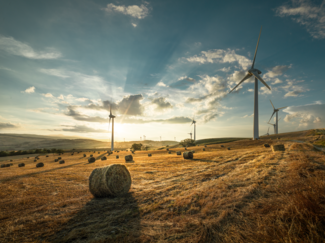
Francesco Piersanti
Francesco Piersanti has been Head of Operation and Maintenance at BKW’s Wind and Solar division since 2019. He is based in Milan with BKW Italia. He has a total of 70 people working in his area; these have been present in Italy since 2017 and in Germany and Switzerland since the end of 2021.
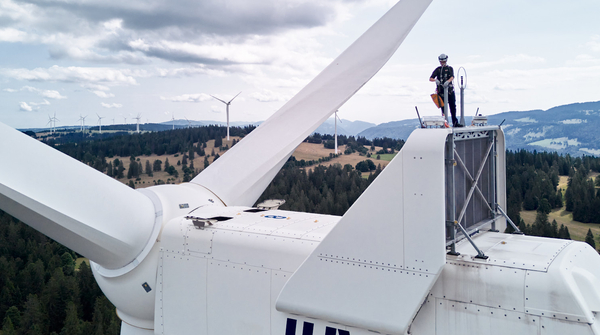


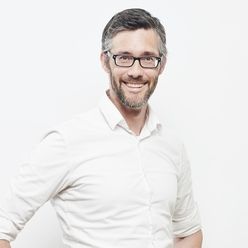
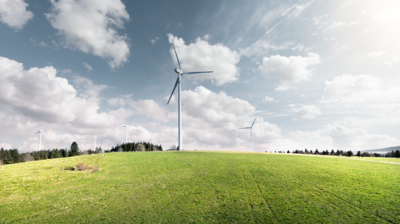
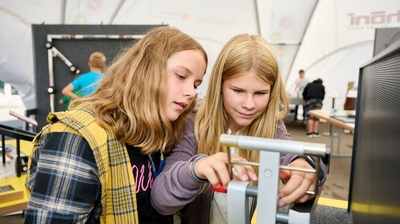


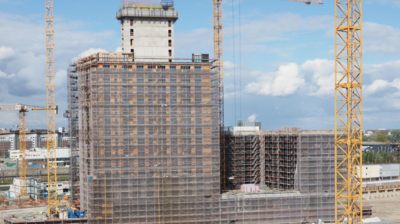
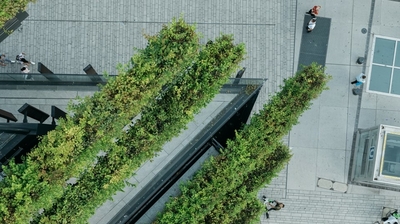
Comments
BKW is open to respectful online dialogue (our netiquette) and welcomes your comments and questions. For questions that do not fit the topic above, please use the contact form.